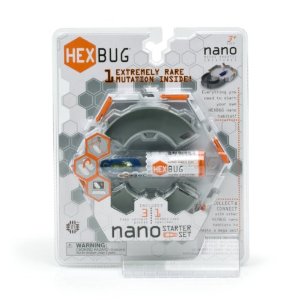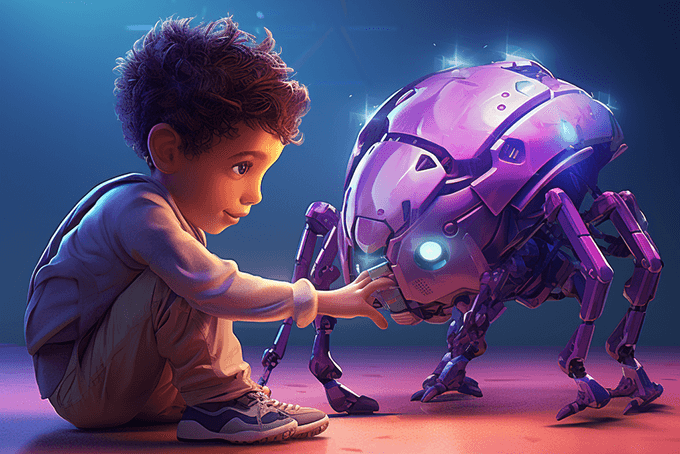Recipient of the 2010 Toy of the Year award from Creative Child Magazine and featured on the Today Show, the HexBug Nano offers many ways to learn about the science of vibration. It is a tiny, collectible, micro robotic creature that propels forward and explores its environment using vibration. Powered by a tiny motor and 12 fixed, angular legs, the HexBug navigates through a maze and even balances.

The robot bug acts like a real bug. Should it fall over, it rights itself and continues to zoom forward. When an object blocks its forward momentum, it scurries away and finds a new path.
This toy comes in several unique collections and series, making it a unique collectible for kids. Each HexBug Nano has an assigned serial number and point value system that owners use to register it online. Rare HexBugs have the highest point values.
Once a HexBug is registered, the owner has access to suitable online games at www.handsandstars.com. These are logic-based games. One game lets the child have control over a block that has to be manipulated through a course. Along the way the player picks up resources to create a virtual Nano. The system keeps score and as each level is completed, a new one is unlocked.
The HexBug Nano Starter Set, perfect for a first time owner, contains one extremely rare mutation, two easy connect curved pieces and one easy connect hexagon piece. Add-ons include Habitat Straight Bridges, Habitat Hex Cells or Habitat Curved Bridges. Of course, you can always add more HexBugs in different colors and shapes.
Toy can be used by children as young as 3. My 11-year-old grandson loved it.
Experiments to try that use vibration:
Comb Kazoo
What you need:
- A comb
- Waxed paper
- Scissors
What to do:
- Cut a piece of waxed paper as long as the comb and wide enough to fold in half and cover the comb.
- Hold the comb with the teeth pointing down
- Fold the waxed paper in half and place it over the comb
- Hold the paper lightly against the comb
- Place the paper–covered comb lightly against your lips and say, “Oooooooo.”
Scientific explanation: Vibration makes sound.
Vibration Causes Sounds
What you need:
- Empty cylindrical-shaped oatmeal box
- Balloon
- Scissors
- Rubber Band
- Aluminum foil
- Tape or glue
- A light source, like a flashlight or small lamp
- A partner
What to do:
- Carefully cut the bottom out of the oatmeal box
- Cut the balloon so it will cover the open end of the oatmeal box
- Make a drum by stretching the balloon tightly across the open end of the box
- Use the rubber band to hold the balloon in place
- Tape or glue the foil to the center of the “drum.” Foil should be as shiny as possible, so try to keep it smooth
- The partner makes some loud noises into the “drum” while you focus the light on the foil
- Now trade places
Scientific explanation: All sound is caused by vibration. The vibration of your vocal chords causes the sound of your voice. Touch the center of your neck and say something. Can you feel your vocal chords vibrating?
When you made noises into the oatmeal box, the sound waves bounced against the balloon enabling you to see sound.
Vibrating Coin
What you need:
- Coin
- Bottle
- Refrigerator
- Water
What to do:
- Place empty bottle in refrigerator to cool
- Place cooled bottle outside
- Dip your finger in the water and place a few drops around the mouth of the bottle and on the edge of the coin
- Place the coin on the mouth of the bottle
- Place both your hands firmly around the bottle, coin should start vibrating in about 15 seconds
- Move your hands away from the bottle and coin should continue to vibrate
Scientific explanation: When the bottle is removed from the refrigerator, the temperature of the gas inside the bottle begins to rise. When you put your hands around the bottle the temperature rises even more. Then the air molecules inside it start moving faster and collide with the coin producing more energy. This makes more pressure which causes expanding air to escape through the rim of the coin, making it vibrate.



